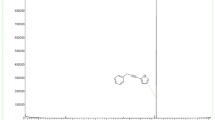Abstract
To explore the effect of rearing-plant species on the contribution of the symbiotic bacterium, Buchnera, to aphid performance, larvae of Aphis fabae that contained the bacteria (symbiotic aphids) and larvae experimentally deprived of the bacteria (aposymbiotic aphids) were reared on 16 plant species. Mortality of aphids was low on most plant species. The relative growth rate (RGR) of the larvae varied with plant species, and was generally depressed by elimination of the bacteria; the mean values of RGR varied between 0 and 0.29 μg μg−1 day−1 for symbiotic aphids and 0 and 0.17 μg μg−1 day−1 for aposymbiotic aphids. The extent to which RGR was depressed by aposymbiosis varied significantly between plant species, suggesting that aphid host plant may influence the contribution of the bacteria to plant utilisation. It is proposed that the bacteria may be particularly important on plants with phloem sap of high amino acid content of low quality, i.e. low concentrations of essential amino acids.
Similar content being viewed by others
Author information
Authors and Affiliations
Additional information
Received: 18 August 1996 / Accepted: 13 January 1997
Rights and permissions
About this article
Cite this article
Adams, D., Douglas, A. How symbiotic bacteria influence plant utilisation by the polyphagous aphid, Aphis fabae . Oecologia 110, 528–532 (1997). https://doi.org/10.1007/s004420050190
Issue Date:
DOI: https://doi.org/10.1007/s004420050190




